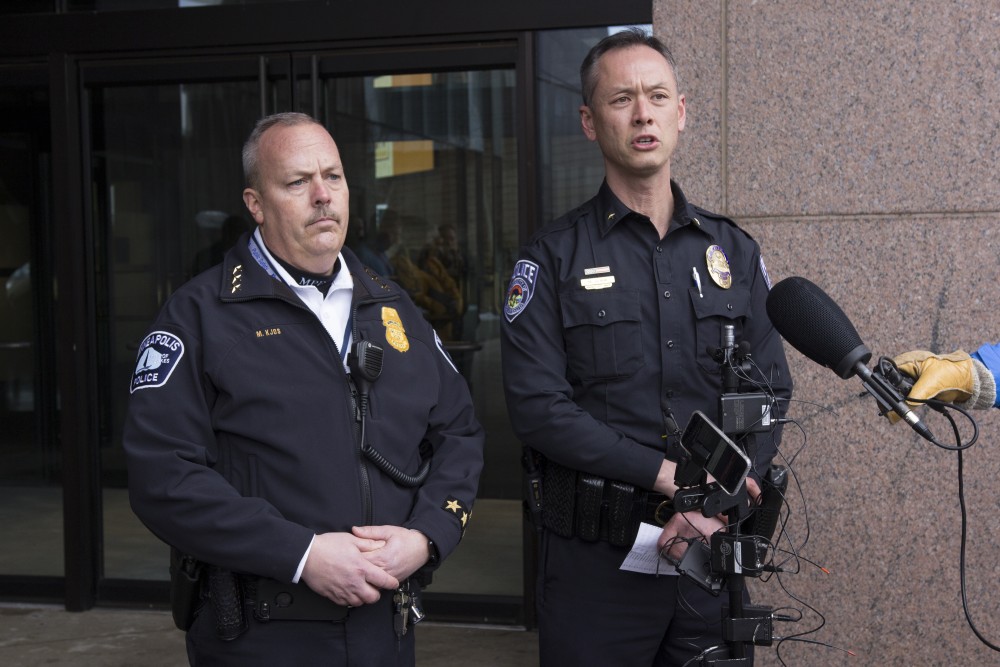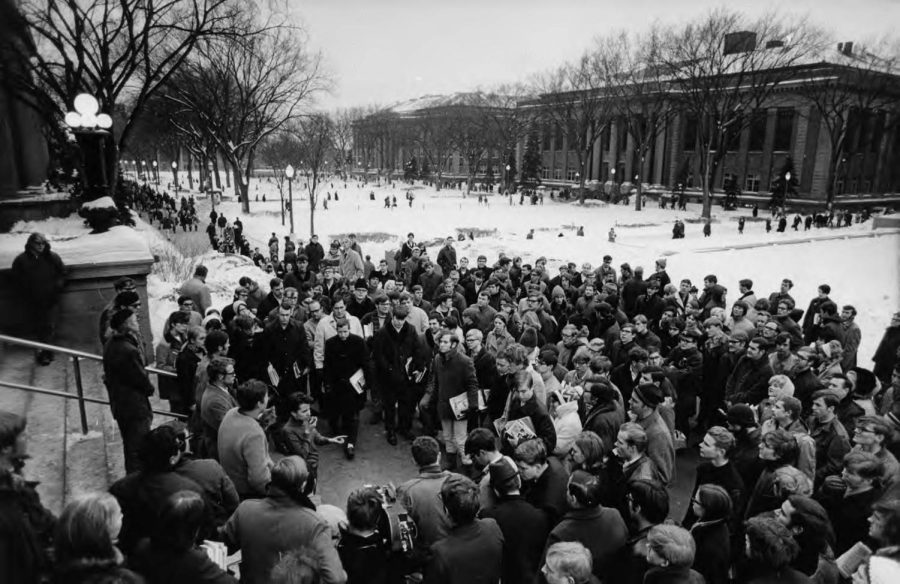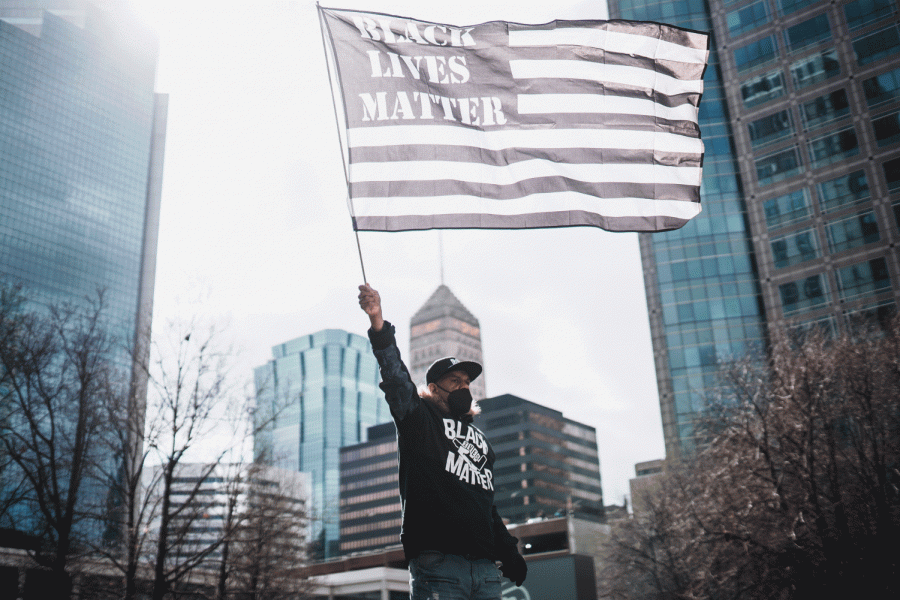As departments across the University of Minnesota continue to cut administrative spending, the school’s public safety budget has stayed stable.
Started in 2014, University President Eric Kaler’s announced his Operational Excellence plan — a goal to cut $90 million in administrative costs by 2019. While departments like the University’s libraries, coordinate campuses and other administrative departments have slimmed down, the University has determined its public safety department can’t afford any cuts.
“If we were forced to cut our budget, we would have to eliminate a police officer position because there is nothing else in their budget that would be significant enough to make a difference,” said Julie Tonneson, associate vice president and budget director at the University.
She said there is no plan to cut public safety spending in the coming year.
Mike Berthelsen, vice president of University Services, said while some departments can find ways to streamline their process, public safety’s needs have to do with the number of officers needed and the area that must be covered, which leaves little room for funding cuts.
“It’s very methodical. You need a person there,” Berthelsen said. “You can’t find efficiencies like you could in another process.”
University of Minnesota Police Chief Matt Clark said, given the size of campus and the student body, the department wants to have a minimum of three patrol officers on call at any given time to respond to 911 calls. These officers are in addition to investigators and outreach officers.
“When we’re in full session on campus, we’re the fifth-largest city in the state. To look at the amount of people and the size of the area, you have to have a 911 emergency response available for incidents on campus,” he said. “The minimum is three, and I wouldn’t want to reduce it any further.”
The University’s public safety department consists of the UMPD, its security division and emergency communications. University administrators and members of public safety present their needs to the University’s finance department on an annual basis, most recently last fall.
Public safety’s needs are determined first at a unit level and then reviewed by administrators before going to finance.
The department’s budget for the current fiscal year is around $9.5 million, which has stayed relatively consistent in past years, though varying needs from year to year can impact the number.
In recent years, public safety has been granted additional funding for more officers, including a mental health officer, and a proposed expansion to the Transportation and Safety building, which currently houses the UMPD.
The campus police currently has 53 sworn officers and two open positions. The number of officers has gone up incrementally since the department was established.
In order to determine the appropriate number of officers of the department, UMPD takes the University’s location, other public safety departments and student population into consideration, Berthelsen said.
He said there have been a number of incidents on or around campus that required collaboration with other police departments — like the recent Graduate Hotel standoff and protests at Lauren Southern’s event on campus.
UMPD collaborates with many of the metro police departments, but its most frequent partner is the Minneapolis Police Department.
“We are located in the City of Minneapolis. … We don’t staff to be able to reply to a very significant issue on our own,” he said. “We have really good working relationships with the other police departments.”
There are also a number of security personnel within the public safety department that aren’t police officers that still contribute to public safety’s presence on campus, Berthelsen said, including programs like 624-WALK.
Around the Big Ten
Across the Big Ten, schools use different metrics to determine the appropriate size of staff for their campus, including student population, collaboration with local departments and standards determined annually by the Big Ten’s law enforcement director.
These staffing standards recommend 1.3 sworn officers per every 1,000 undergraduate students.
Benjamin Hunter, superintendent of public safety at Indiana University, said the university’s Bloomington campus police department is seeking to increase its number of sworn officers from 40 to between 54 and 56 in the next five years, pointing to the Big Ten’s staffing standards.
“We’re understaffed for an institution our size,” Hunter said. “Statistically, if you look at FBI data and Big Ten data, we should be around 56 officers. So we’re constantly looking at that data when we put in budget requests.”
According to the standards, the University should have at least 41 officers. However, while Berthelsen said these standards are taken into consideration, they are by no means the sole factor when the University looks at its staffing needs.
Of the eleven Big Ten schools the Minnesota Daily received data from, eight met the standards.
Like the University, the University of Wisconsin-Madison said it wants to avoid cutting any officer positions if at all possible. But unlike Minnesota, Wisconsin has seen cuts to its police department budget in past years and was forced to reallocate spending in 2015.
Despite these cuts, the UW-Madison police department did not need to cut any officers. Marc Lovicott, director of communications at UWPD, said the department was able to find creative ways to work around officer reductions, including cutting some security staff.
“When we were looking at our budget, it was important for us not to have a reduction in police officers,” he said. “It was important for us to look for alternative ways to absorb some of the cuts.”
And while some schools across the Big Ten have seen cuts, Berthelsen said it is unlikely the University will follow suit. If anything, the department will continue to grow.
Currently, he said the department is in the process of filling the two positions, though it has no solid timeline.
“Incrementally, the institution has exempted public safety from many cuts to make sure we’re not going backwards at all,” Berthelsen said. ”We haven’t had giant shifts, but incrementally have added additional staff, and if I was guessing, that’s probably what I would guess for the future as well.”













